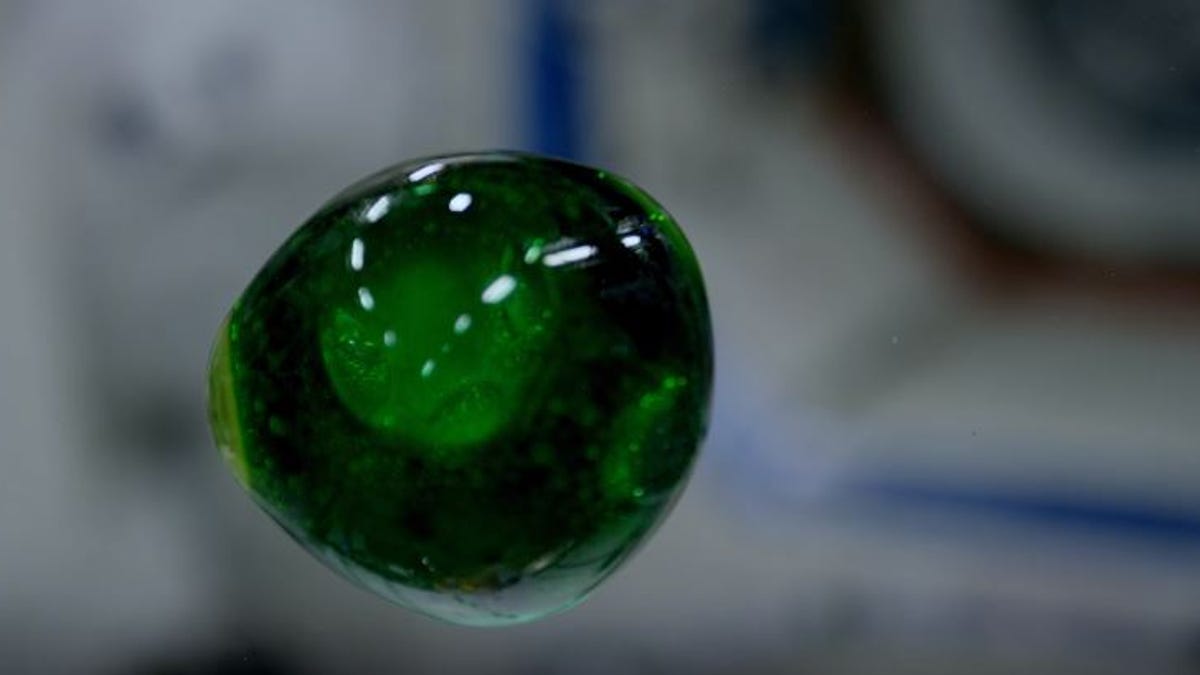Bubbly, floating water ball on the ISS might show a future industry
One aspiring space industrialist thinks a viral video of weird air bubbles inside a floating ball of water could help build a new space economy.
If you keep up with your viral space videos, you probably saw the below video from the International Space Station of astronaut Scott Kelly messing around with an Alka-Seltzer tablet dissolved in a floating ball of water and thought it was pretty neat.
When Daniel Faber, CEO of asteroid mining startup Deep Space Industries, watched the same video, he saw the future.
In the brief vid, shot in crystal-clear 4K resolution, we see a roughly tennis ball-sized blob of water floating around as Kelly changes its color by injecting a few drops of dye. It gets really fascinating when he slips an effervescent tablet into the ball and we can watch it bubble and fizz inside the mass of H20. At the same time, gas bubbles form inside and occasionally escape the surface tension of the water, deforming it a bit in the process.
It's hard to explain without seeing it, as no process on Earth within the grasp of gravity is really comparable.
Faber told an audience that included this reporter at the New Worlds Conference in Austin last weekend that the video re-affirmed the untapped value of space for him.
"This is an industrial process waiting to be developed," he said.
Faber envisions potential manufacturing or other industrial processes that may be able to take advantage of the odd properties of liquids in microgravity to keep substances separated from each other in a more controlled manner. For instance, he said, maybe there is "a way to use what we're seeing in that video to keep toxic substances in a liquid separate from other substances."
Faber went on to give the example of silicon carbide wafers, which are used in the production of semiconductors. He cited research that shows silicon carbide created in microgravity has fewer imperfections and works better than when the same substance is created in labs on Earth.
The potential effects of microgravity on science and industry is of particular interest to Faber's company, Deep Space Industries, which hopes to start mining asteroids to supply raw materials for a new space economy that may include things like orbiting solar power stations and new communications infrastructure, just for starters.
But all that is still years down the road -- a road that passes through space and might be navigated using discoveries that start with something as simple as popping an Alka-Seltzer tab into a ball of water.


